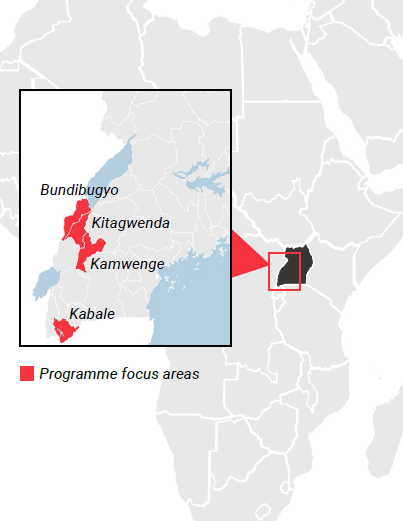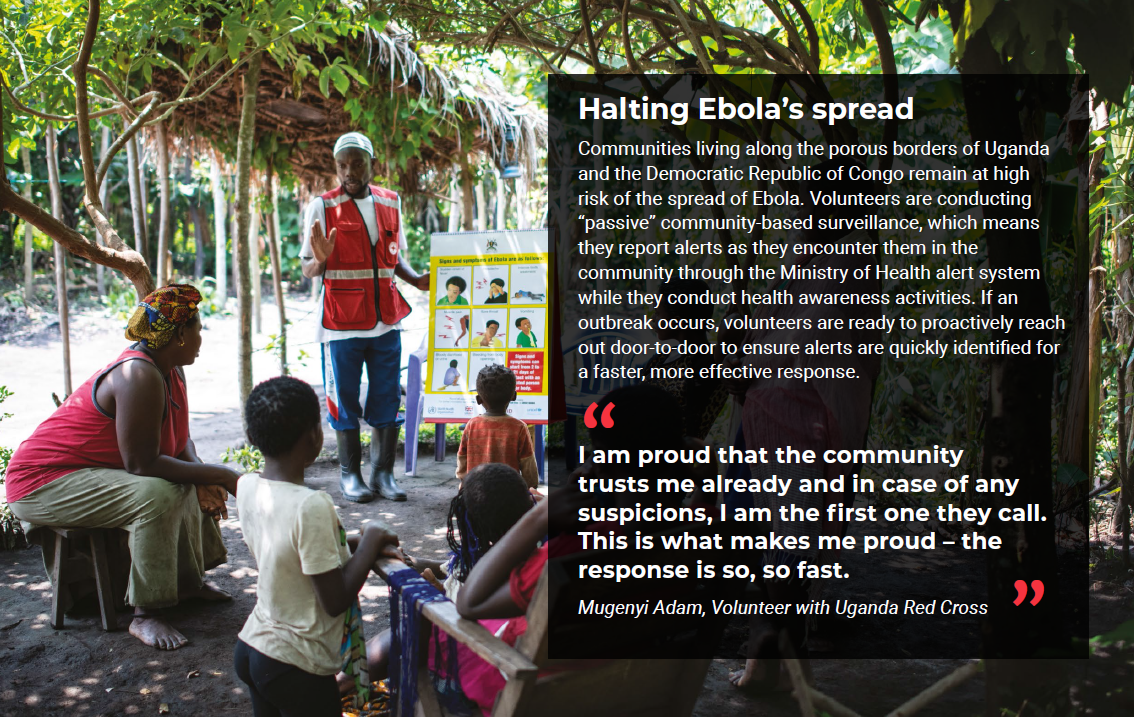


Uganda is a fast-growing country that remains vulnerable to a variety of epidemics and pandemics, including Ebola and other viral hemorrhagic fevers, measles and acute watery diarrhoea. Diseases coming from animals that can affect human health are also a threat, including Rift Valley Fever, anthrax and rabies.
Uganda Red Cross, with support from the International Federation of the Red Cross and Red Crescent Societies (IFRC) and funding from USAID, has been helping communities prepare and prevent the spread of diseases.Volunteers are sensitizing communities about health risks, with a focus on Ebola. Focused in Kabale, Kamwenge, Kitagwenda and Bundibugyo, Red Cross works with communities, local responders, media, humanitarian partners and government to collectively prepare and respond to epidemics.
Through Uganda Red Cross’ extensive network of local volunteers, a powerful community-based surveillance system has been set up, in coordination with other actors including the Ministry of Health and Ministry of Agriculture, Animal Industry and Fisheries. This system is designed to help stop diseases from spreading by detecting them early before an outbreak occurs. It has already identified several measles alerts, later laboratory confirmed, leading to vaccination campaigns and awareness raising activities.


We are ensuring communities have itical information about the spread of diseases and how to prevent them, systems to detect outbreaks and mechanisms that ensure information sharing and community engagement.Activities include:
• Engaging communities through mobile cinemas, drama and music.
• Engaging communities through mobile cinemas, drama and music.
• Engaging, training and collaborating with community influencers, such as religious leaders and traditional healers.
Sierra Leone Red Cross has more than 11,000 volunteers across the country which gives extraordinary reach into communities. In their supporting role to the government, they are often central to emergency responses amid outbreaks. Activities include:
• Contingency planning with government and key partners.
• Strengthening systems to enable a fast, scaled-up response.
• Strengthening partnerships with different sectors and ministries.
• Training and readying communitybased volunteers.
.Epidemics not only threaten lives but all aspects of society, including trade, transportation and education. We work with a variety of key stakeholders and the media in epidemic preparedness and response. Activities include:
• Helping prepare a variety of sectors to respond (including those affected by both animal and human health).
• Training media to communicate lifesaving information to affected populations.
• Mapping critical data to help responders make informed decisions when a health crisis hits.